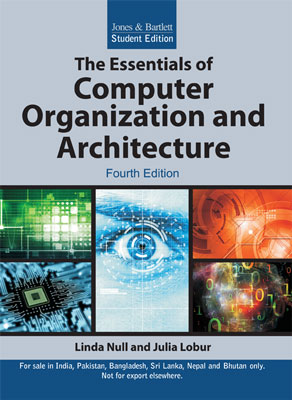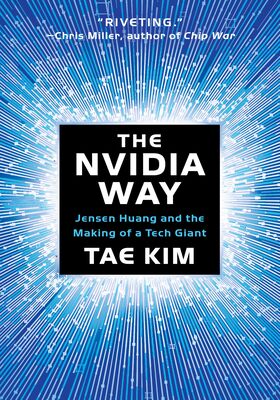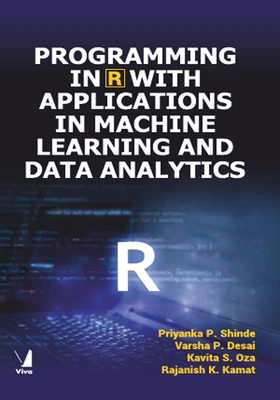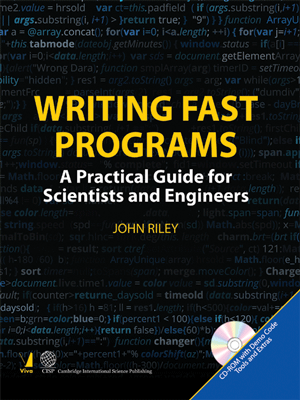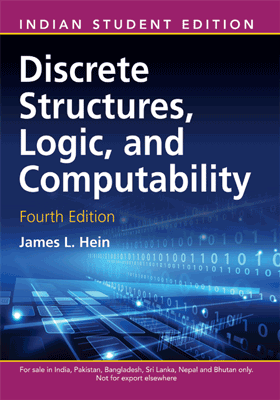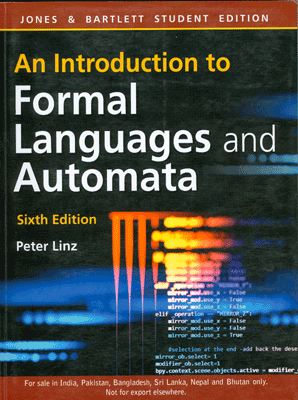The Essentials of Computer Organization and Architecture, 4/e
The Essentials of Computer Organization and Architecture, 4/e
₹895.50 ₹995.00 Save: ₹99.50 (10%)
Go to cartISBN: 9789380853949
Bind: Paperback
Year: 2015
Pages: 916
Size: 165 x 229 mm
Publisher: Jones & Bartlett Learning
Published in India by: Jones & Bartlett India
Exclusive Distributors: Viva Books
Sales Territory: India, Nepal, Pakistan, Bangladesh, Sri Lanka
Description:
“The Essentials of Computer Organization and Architecture is an outstanding text that builds from the lowest level of logic gates through the circuits of the CPU up to the complexity of modern machines. I?ve used this text since 2008 (Second Edition). Each new edition has brought additional clarity to the material. One of my students said, at the end of the term, I feel like I could build a computer from scratch.
The exercises are well-designed so that I can assign problems that test the topics we’ve focused on. It is a vast, rich collection of information.”
—Jacqueline A. Jones
Associate Professor, Dept. of Computer and Information Science
Brooklyn College of the City University of New York
Updated and revised to reflect the most current data in the field, perennial bestseller The Essentials of Computer Organization and Architecture, Fourth Edition is comprehensive enough to address all necessary organization and architecture topics, but concise enough to be appropriate for a single-term course. Its focus on real-world examples and practical applications encourages students to develop a —big picture—understanding of how essential organization and architecture concepts are applied in the computing world. In addition to direct correlation with the ACM/IEEE CS2013 guidelines for computer organization and architecture, the text exposes readers to the inner workings of a modern digital computer through an integrated presentation of fundamental concepts and principles.
Key features of the fully revised and updated Fourth Edition include:
- A direct correlation with the ACM/IEEE CS2013 guidelines for computer organization and architecture, in addition to integrating material from additional knowledge units
- All-new material on a variety of topics, including zetabytes and yottabytes, automatons, tablet computers, graphic processing units, and cloud computing
- MARIE Simulator package allows students to learn the essential concepts of computer organization and architecture, including assembly language, without getting caught up in unnecessary and confusing details
Target Audience:
This book is ideal for the students and academicians of Computer Science.
Contents:
Preface
Chapter 1: Introduction • Overview • The Main Components of a Computer • An Example System: Wading Through the Jargon • Standards Organizations • Historical Development • Generation Zero: Mechanical Calculating Machines (1642?1945) • The First Generation: Vacuum Tube Computers (1945-1953) • The Second Generation: Transistorized Computers (1954?1965) • The Third Generation: Integrated Circuit Computers (1965?1980) • The Fourth Generation: VLSI Computers (1980) • Moore's Law • The Computer Level Hierarchy • Cloud Computing: Computing as a Service • The Von Neumann Model • NonVon Neumann Models • Parallel Processors and Parallel Computing • Parallelism: Enabler of Machine Intelligence—Deep Blue and Watson • Chapter Summary • Further Reading • References • Review of Essential Terms and Concepts • Exercises
Chapter 2: Data Representation in Computer Systems • Introduction • Positional Numbering Systems • Converting Between Bases • Converting Unsigned Whole Numbers • Converting Fractions • Converting Between Power-of-Two Radices • Signed Integer Representation • Signed Magnitude • Complement Systems • Excess-M Representation for Signed Numbers • Unsigned Versus Signed Numbers • Computers, Arithmetic, and Booth's Algorithm • Carry Versus Overflow • Binary Multiplication and Division Using Shifting • Floating-Point Representation • A Simple Model • Floating-Point Arithmetic • Floating-Point Errors • The IEEE-754 Floating-Point Standard • Range, Precision, and Accuracy • Additional Problems with Floating-Point Numbers • Character Codes • Binary-Coded Decimal • EBCDIC • ASCII • Unicode • Error Detection and Correction • Cyclic Redundancy Check • Hamming Codes • Reed-Solomon • Chapter Summary • Further Reading • References • Review of Essential Terms and Concepts • Exercises • Focus on Codes for Data Recording and Transmission • Non-Return-to-Zero Code • Non-Return-to-Zero-Invert Code • Phase Modulation (Manchester Code) • Frequency Modulation • Run-Length-Limited Code • Partial Response Maximum Likelihood Coding • Summary • Exercises
Chapter 3: Boolean Algebra and Digital Logic • Introduction • Boolean Algebra • Boolean Expressions • Boolean Identities • Simplification of Boolean Expressions • Complements • Representing Boolean Functions • Logic Gates • Symbols for Logic Gates • Universal Gates • Multiple Input Gates • Digital Components • Digital Circuits and Their Relationship to Boolean Algebra • Integrated Circuits • Putting It All Together: From Problem Description to Circuit • Combinational Circuits • Basic Concepts • Examples of Typical Combinational Circuits • Sequential Circuits • Basic Concepts • Clocks • Flip-Flops • Finite State Machines • Examples of Sequential Circuits • An Application of Sequential Logic: Convolutional Coding and Viterbi Detection • Designing Circuits • Chapter Summary • Further Reading • References • Review of Essential Terms and Concepts • Exercises • Focus on Karnaugh Maps • Introduction • Description of Kmaps and Terminology • Kmap Simplification for Two Variables • Kmap Simplification for Three Variables • Kmap Simplification for Four Variables • Don?t Care Conditions • Summary • Exercises
Chapter 4: MARIE: An Introduction to a Simple Computer • Introduction • CPU Basics and Organization • The Registers • The ALU • The Control Unit • The Bus • Clocks • The Input/Output Subsystem • Memory Organization and Addressing • Interrupts • MARIE • The Architecture • Registers and Buses • Instruction Set Architecture • Register Transfer Notation • Instruction Processing • The Fetch”Decode” Execute Cycle • Interrupts and the Instruction Cycle • MARIE's I/O • A Simple Program • A Discussion on Assemblers • What Do Assemblers Do? • Why Use Assembly Language? • Extending Our Instruction Set • A Discussion on Decoding: Hardwired Versus Microprogrammed Control • Machine Control • Hardwired Control • Microprogrammed Control • Real-World Examples of Computer Architectures • Intel Architectures • MIPS Architectures • Chapter Summary • Further Reading • References • Review of Essential Terms and Concepts • Exercises
Chapter 5: A Closer Look at Instruction Set Architectures • Introduction • Instruction Formats • Design Decisions for Instruction Sets • Little Versus Big Endian • Internal Storage in the CPU: Stacks Versus Registers • Number of Operands and Instruction Length • Expanding Opcodes • Instruction Types • Data Movement • Arithmetic Operations • Boolean Logic Instructions • Bit Manipulation Instructions • Input/Output Instructions • Instructions for Transfer of Control • Special-Purpose Instructions • Instruction Set Orthogonality • Addressing • Data Types • Address Modes • Instruction Pipelining • Real-World Examples of ISAs • Intel • MIPS • Java Virtual Machine • ARM • Chapter Summary • Further Reading • References • Review of Essential Terms and Concepts • Exercises
Chapter 6: Memory • Introduction • Types of Memory • The Memory Hierarchy • Locality of Reference • Cache Memory • Cache Mapping Schemes • Replacement Policies • Effective Access Time and Hit Ratio • When Does Caching Break Down? • Cache Write Policies • Instruction and Data Caches • Levels of Cache • Virtual Memory • Paging • Effective Access Time Using Paging • Putting It All Together: Using Cache, TLBs, and Paging • Advantages and Disadvantages of Paging and Virtual Memory • Segmentation • Paging Combined with Segmentation • A Real -World Example of Memory Management • Chapter Summary • Further Reading • References • Review of Essential Terms and Concepts • Exercises
Chapter 7: Input/Output and Storage Systems • Introduction • I/O and Performance • Amdahl? s Law • I/O Architectures • I/O Control Methods • Character I/O Versus Block I/O • I/O Bus Operation • Data Transmission Modes • Parallel Data Transmission • Serial Data Transmission • Magnetic Disk Technology • Rigid Disk Drives • Solid State Drives • Optical Disks • CD-ROM • DVD • Blue-Violet Laser Discs • Optical Disk Recording Methods • Magnetic Tape • RAID • RAID Level 0 • RAID Level 1 • RAID Level 2 • RAID Level 3 • RAID Level 4 • RAID Level 5 • RAID Level 6 • RAID DP • Hybrid RAID Systems • The Future of Data Storage • Chapter Summary • Further Reading • References • Review of Essential Terms and Concepts • Exercises • Focus on Data Compression • Introduction • Statistical Coding • Huffman Coding • Arithmetic Coding • Ziv-Lempel (LZ) Dictionary Systems • GIF and PNG Compression • JPEG Compression • MP3 Compression • Summary • Further Reading • References • Exercises
Chapter 8: System Software • Introduction • Operating Systems • Operating Systems History • Operating System Design • Operating System Services • Protected Environments • Virtual Machines • Subsystems and Partitions • Protected Environments and the Evolution of Systems Architectures • Programming Tools • Assemblers and Assembly • Link Editors • Dynamic Link Libraries • Compilers • Interpreters • Java: All of the Above • Database Software • Transaction Managers • Chapter Summary • Further Reading • References • Review of Essential Terms and Concepts • Exercises
Chapter 9: Alternative Architectures • Introduction • RISC Machines • Flynn's Taxonomy • Parallel and Multiprocessor Architectures • Superscalar and VLIW • Vector Processors • Interconnection Networks • Shared Memory Multiprocessors • Distributed Computing • Alternative Parallel Processing Approaches • Dataflow Computing • Neural Networks • Systolic Arrays • Quantum Computing • Chapter Summary • Further Reading • References • Review of Essential Terms and Concepts • Exercises
Chapter 10: Topics in Embedded Systems • Introduction • An Overview of Embedded Hardware • Off-the-Shelf Embedded System Hardware • Configurable Hardware • Custom-Designed Embedded Hardware • An Overview of Embedded Software • Embedded Systems Memory Organization • Embedded Operating Systems • Embedded Systems Software Development • Chapter Summary • Further Reading • References • Review of Essential Terms and Concepts • Exercises
Chapter 11: Performance Measurement and Analysis • Introduction • Computer Performance Equations • Mathematical Preliminaries • What the Means Mean • The Statistics and Semantics • Benchmarking • Clock Rate, MIPS, and FLOPS • Synthetic Benchmarks: Whetstone, Linpack, and Dhrystone • Standard Performance Evaluation Corporation Benchmarks • Transaction Processing Performance Council Benchmarks • System Simulation • CPU Performance Optimization • Branch Optimization • Use of Good Algorithms and Simple Code • Disk Performance • Understanding the Problem • Physical Considerations • Logical Considerations • Chapter Summary • Further Reading • References • Review of Essential Terms and Concepts • Exercises
Chapter 12: Network Organization and Architecture • Introduction • Early Business Computer Networks • Early Academic and Scientific Networks: The Roots and Architecture of the Internet • Network Protocols I: ISO/OSI Protocol Unification • A Parable • The OSI Reference Model • Network Protocols II: TCP/IP Network Architecture • The IP Layer for Version 4 • The Trouble with IP Version 4 • Transmission Control Protocol • The TCP Protocol at Work • IP Version • Network Organization • Physical Transmission Media • Interface Cards • Repeaters • Hubs • Switches • Bridges and Gateways • Routers and Routing • The Fragility of the Internet • Chapter Summary • Further Reading • References • Review of Essential Terms and Concepts • Exercises
Chapter 13: Selected Storage Systems and Interfaces • Introduction • SCSI Architecture • ?Classic? Parallel SCSI • The SCSI Architecture Model- 3 • Internet SCSI • Storage Area Networks • Other I/O Connections • Parallel Buses: XT to ATA • Serial ATA and Serial Attached SCSI • Peripheral Component Interconnect • A Serial Interface: USB • Cloud Storage • Chapter Summary • Further Reading • References • Review of Essential Terms and Concepts • Exercises
Appendix A Data Structures and the Computer • Introduction • Fundamental Structures • Arrays • Queues and Linked Lists • Stacks • Trees • Network Graphs • Summary • Further Reading • References • Exercises ?
Glossary • Answers and Hints for Selected Exercises • Index
About the Authors:
Linda Null, PhD- Pennsylvania State University
Linda Null received a Ph.D. in Computer Science from Iowa State University in 1991, an M.S. in Computer Science from Iowa State University in 1989, an M.S. in Computer Science Education from Northwest Missouri State University in 1983, an M.S. in Mathematics Education from Northwest Missouri State University in 1980, and a B.S. in Mathematics and English from Northwest Missouri State University in 1977. She has been teaching mathematics and computer science for over 25 years and is currently the Computer Science graduate program coordinator at Penn State Harrisburg, where she has been a member of the faculty since 1995. Professor Null was recently presented Penn State's Award for Excellence in Teaching in recognition of her innovative and outstanding work in the classroom, as well as the Kathryn Towns Award in recognition of her commitment to the issues and interests of women students, particularly those in mathematics and computer science. Her areas of interest include computer organization and architecture, operating systems, and computer security.
Julia Lobur- Pennsylvania State University, Pennsylvania
Julia has been a practitioner in the computer industry for over 20 years. She has held positions as a systems consultant, a staff programmer/analyst, a systems and network designer, and a software development manager.
